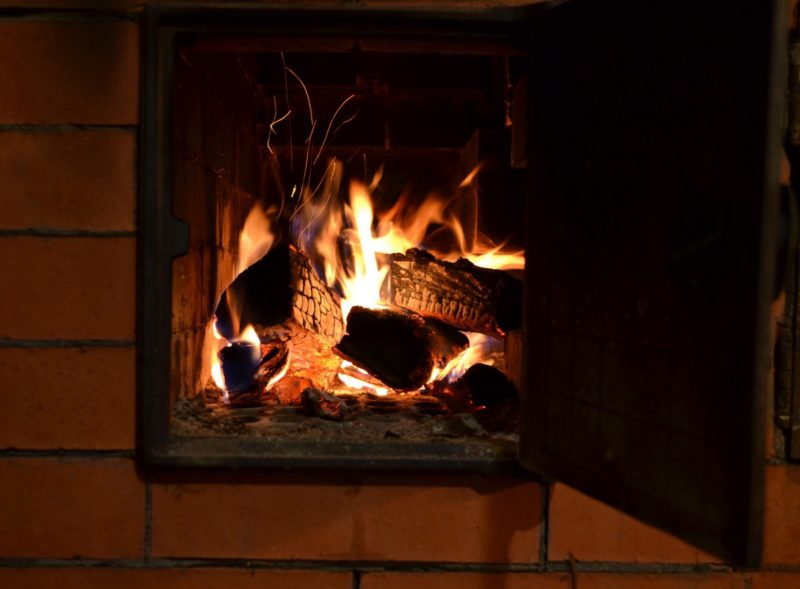Maximize the efficiency and practicality of your stove by following these guidelines on how to make a wood burning stove. Poor maintenance and installation can result in stove fires.
Always preserve a safe distance between combustibles and maintain the efficiency of your stove and chimney. To maximize the efficiency of a wood stove, you need to do more than just stoke the fire.
Take note that the efficiency of your woodstove depends on several factors, including where it is located in your home, what kind of wood you use, and how it is burned.
Tips To Make A Wood Burning Stove More Efficient
So, how to make a wood burning stove? There’s a lot more to installing a wood-burning stove than meets the eye, though. Nevertheless, there are a few things to contemplate. Below are some tips that you should keep in mind to ensure that your wood stove will work efficiently.
#1. Choose a good location
The best place to put your woodstove is wherever you want it. However, you have to keep in mind the chimney. Unless you’re ready to install a new one specifically for your wood stove, this can be a problem. Having over 7 feet of pipe between the stove and the chimney can lead to dangerous creosote buildup.
Since wood-burning stoves are not central heating systems, it makes sense to put them in the middle of your house. This way, it can distribute heat evenly throughout the house. However, some dwellings cannot be heated entirely by a wood stove because of their size or the presence of several inside obstacles. Therefore, the stove should be located in the room where you are spending a lot of time.
#2. Consider the space
Any model with the ability to generate a significant quantity of heat, when used properly, will quickly heat a small space. If you only have small rooms or a stove is the only thing you can use in a small room, buy a little stove. The stove installer or dealer can probably help you out.
#3. Use quality firewood
When it comes to buying wood, it’s crucial to think about the quantity and quality. Please find out how potential suppliers calculate the volume of wood they will provide. If they claim to have a truck bed that holds 128 ft3 of wood, be wary since it will be a cord. With a loader, it’ll be around three-quarters of the cube amount if they throw it on.
Quality is determined by two factors: variety and seasoning. You can expect a mixture of the principal timber species in your area. First, however, you are required to inquire. Firewood dealers are restricted to selling only the wood that they have on hand right now. To ensure that your wood is dry when you need it, I highly recommend purchasing unseasoned wood before the start of the season. Only a tiny fraction of “seasoned” wood is seasoned, and it is priced a lot more than new wood. This is my experience.
The only difference between those two is the presence of water. Greenwood carries 50% more water than dry wood, with only 15-20% water content. Wood maintains a lot of moisture until it’s split, cut to a certain length, and covered. It takes time for the clock to start ticking after a tree is felled, and even then, it ticks slowly.
As a result, many firewood suppliers do not split and buck the wood unless the customer specifically wants it, which means the supply will take a long time to dry. Ensure the wood meets the requirements of your stove before placing an order. For example, no one should believe they can utilize a 30-inch piece of equipment designed for a 24-inch log. If you are not aware of this, it is suggested that you measure your firebox to get an idea of how much wood you’ll need.
Which kinds of wood are best suited to being used as fuel?
Using seasoned hardwood is not only the most straightforward method, but it’s also the most practical. Also, take note that the more types of wood you have on hand, the better off you’ll be in the long run. For example, when it’s been very chilly, I’ve tried lighting my hickory to keep warm, but by the following day, the stove was utterly full of coals, and the coals themselves weren’t enough to keep me warm. However, combining hickory with less thick timbers yields astounding results.
As for softwood, it’s best to stay away from burning it altogether unless you’re using it as kindling. Otherwise, your stove could catch fire or perhaps be destroyed by a chimney fire, in which case you’d have to deal with a lot of creosote buildup quickly.
Consult with professional wood-burners and/or state foresters if you’re unsure about which kind of wood is suitable for burning in your location. Over time, you’ll come up with your own set of likes and dislikes. You may want to read why does my wood stove smoke up the house.
It’s A Wrap!
Aside from the tips on making a wood-burning stove more efficient mentioned above, there are still many other things you can do. But those are the basics when it comes to efficient wood-burning stoves: good location, appropriate for the space, and quality firewood. You may want to read about what to do with ashes from wood stove and how to install a wood stove in a garage. Now, you know how to make a wood burning stove!

